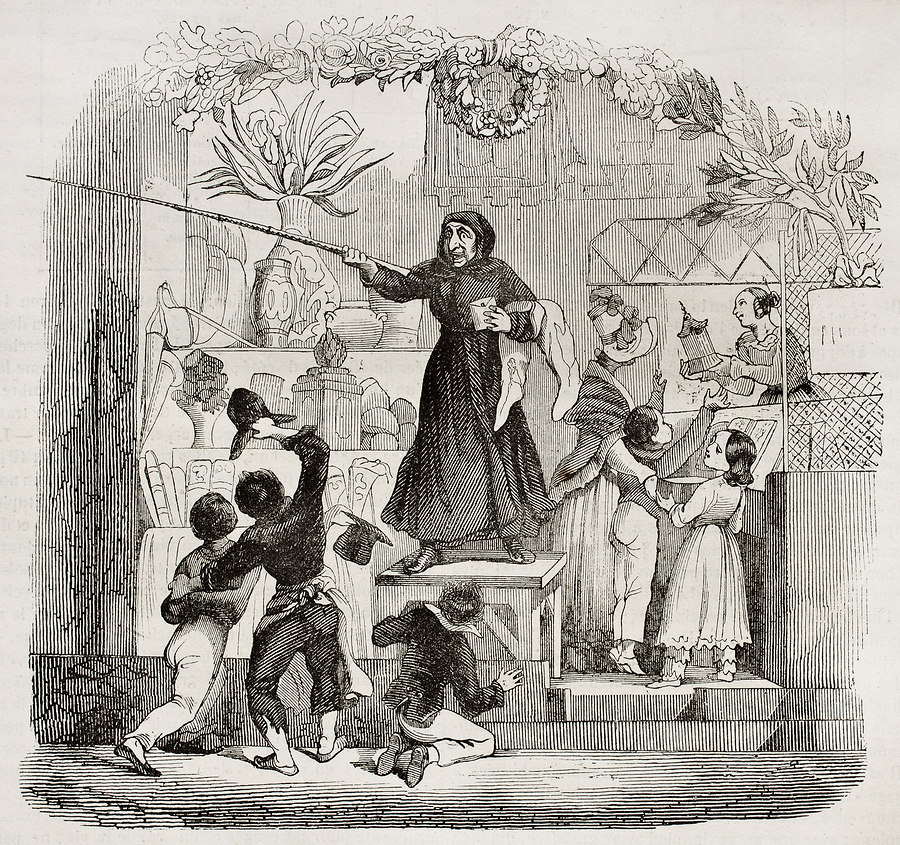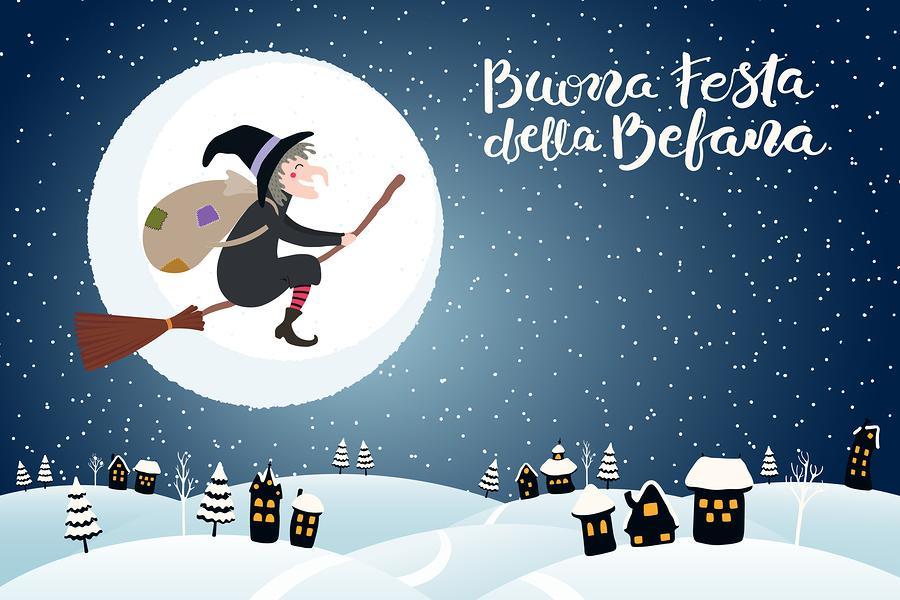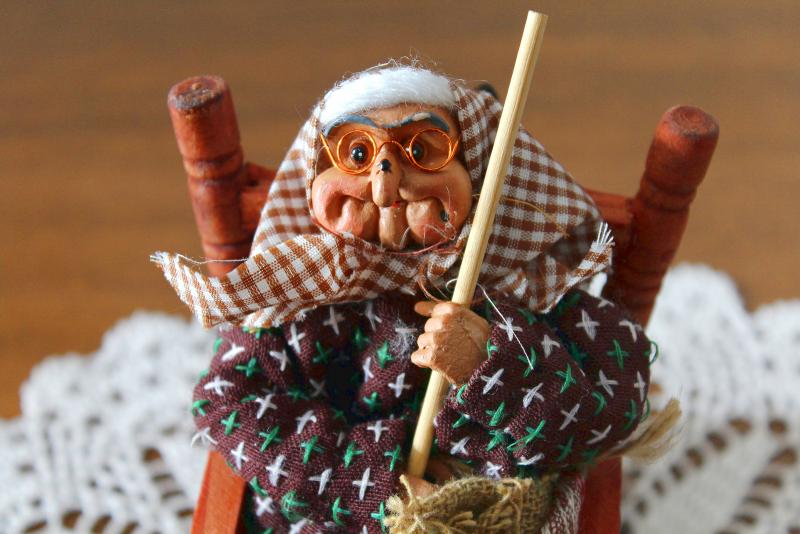According to Italian traditions, Befana is an old woman who gives presents throughout the country on the night of January 5, also known as the Epiphany Eve. By giving out gifts, the lady is often compared to Santa Claus.
Many people believe that the name Befana originates from the Feast of Epiphany. Others have the belief that Befana is a descendant of Strenia, a goddess of the Romans. In reality, Befana was not as popular in Italy as it is today. It started in Rome and only spread to other parts of the country during the 20th century.
The majority of Italians believe that Befana visits all the children in Italy on the eve of January 6 and gives them rewards. If the kids have the right character, she gives them candy. Otherwise, Befana gives either dark candy or a lump of coal. In the impoverished regions in Italy, such as Sicily, children get a stick in a stocking instead of coal.
Since the Befana is an excellent housekeeper, people believe that she always sweeps the floor before leaving. Some trust that the sweeping means doing away with the problems of the year. In most cases, the child’s family leaves a small amount of food and a glass of wine for the Befana.
Regarding appearance, the general impression is that the Befana is a hag riding a broomstick through the air, donning a soot-covered black shawl since her entry point into houses is the chimney. She always carries a gift hamper containing candy and other presents.

The Legend of the Befana
Some Christians believe that the Three Wise Men who gifted baby Jesus in the bible approached the Befana before the birth of Christ. The men asked for directions to the location of Jesus since they had already spotted his star in the sky. Since the Befana was unaware of the location, she offered a one-night shelter to the wise men. On the following day, she refused to go on the search for Jesus, citing busyness as her most significant concern.
Later on, the Befana decided to follow the men in the pursuit of Jesus. The search is still on to date because she could reach the wise men. This explains why the Befana travels around children and gives the good ones candy, while the poor ones get coal, online, and garlic.
Another Christian legend states that the Befana was an ordinary woman with a beloved child whose death caused significant grief. When Jesus was born, the lady went to see her, believing that he was her son. She took gifts to Jesus to make him happy, and as a result, Christ made her the mother of all Italian children.
If anybody sees the Befana, they get a thump from her broomstick because she likes to remain private. The objective of this belief is to keep children asleep during the night.
The last explanation about the origin of the Befana claims that she was cleaning and turned the wise men away when they came looking for Jesus. Later, guilt befell her, and she started looking for Jesus. The broomstick she travels on is for cleaning purposes, while the gift hamper is intended for baby Jesus. Although the Befana is yet to succeed on this mission, she gives gifts to children because all of them have Jesus in them.
The Befana Today
All regions in Italy celebrated the Befana, making it a national icon. However, the practice is held in the highest regard in the Marches, Latium, and Umbria. Urbana is the official home of the lady. A massive festival occurs every year, with up to 50,000 people in attendance. Several people imitate the Befana by swinging from the main tower and enjoying their time with kids.
Italian children usually expect to get coal in their stockings as an indicator of any bad behaviour committed earlier in the year. Three Italian regions are renowned for lively Befana traditions.

Piazza Navona
This is a market in central Rome that sells candy and toys during the time of the Befana festivals. Tourists often flock the area on the midnight of January 6 to confirm the myth that the Befana shows herself at this market through a window.
Urbania
Urbania is a town located in the Pesaro e Urbino province in the Marches. An annual Befana festival gets held between January 2 and January 6. During the celebrations, locals build the ‘house of the Befana’ and reserve a mailbox addressed to the lady.
Fornovo di Taro
Here, a national meeting on the Befana gets held on January 5 and 6 yearly.
Rest of the World
In regions outside Italy with a considerable number of Italians, the local community usually observes the Befana celebrations. For example, a Befana choir performs in the Festival of Lights parade at the Kensington Market in Toronto every December. At this time, people wear their Befana costumes and sing songs that wish for the sun’s return.
The singers then proceed to give candy to kids, to play the accordion, and sing loudly such that members of the public join the party.
How to Travel to the Befana Festival
For the best possible experience, it is advisable to visit Italy during the Christmas period. Here, you will get a first-hand viewing of the build-up to the ceremony, as well as the feast itself.
If you want to travel to Italy, you need a visa and the necessary supporting documents like a valid passport. However, this is set to change in 2021 after the introduction of the ETIAS permit. So how does ETIAS work? It is a newly formed authorization system that aims to improve the way people get into Europe. It focuses on improving security by using biometric data and scrutinizing the backgrounds of all people willing to travel into Europe by checking their history against Europol and Interpol. More importantly, it lasts for three years, meaning that it does not have to get replaced as frequently as a regular passport.









